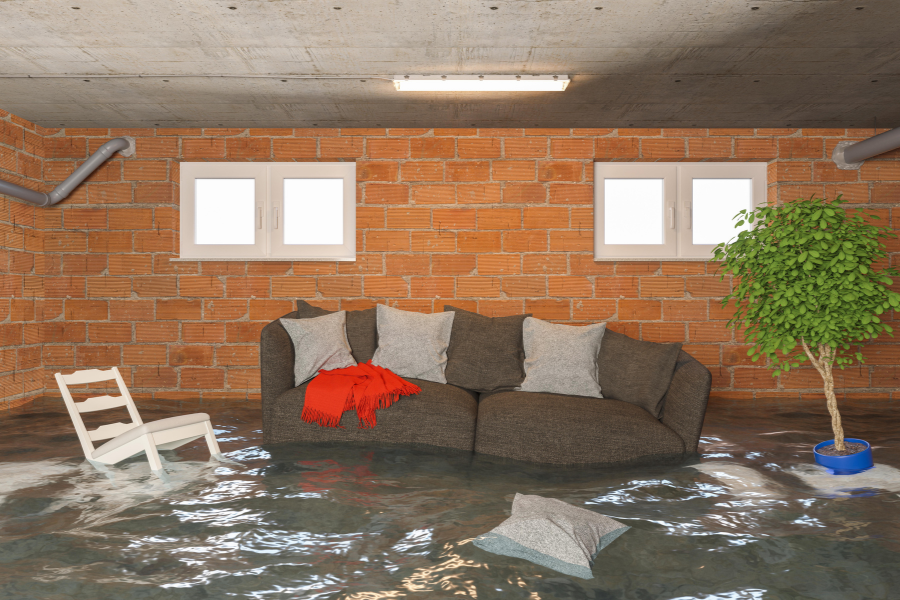Nothing causes an anxiety-induced pit in the bottom of a homeowner’s stomach quite like the sound of rushing water – especially if it’s coming from the basement.
If your basement seems to flood every time it rains, gravity is likely to blame. By definition, basements are the base of your home, built either partly or entirely underground. So, thanks to gravity at work, pushing water from high grounds to low, underground spaces become more susceptible to flooding.
More often than not, flooding happens after a storm or exceptionally rainy season. However, although less common, basement floods can occur in dry weather conditions, too, such as if a sewer pipe bursts, or a water tank fails. Regardless of the reasoning, the aftermath once the water resides can be far worse than the flooding itself.
If you find yourself in the misfortunate situation of a flooded basement, there’s no need to add insult to injury by having to research how to take care of it. That’s why the House Hacks Tips team consulted with the experts for you, and has put together a fool-proof, step-by-step plan of attack to follow to get your basement back on track after a flood.
Keep reading (and be sure to tag this page in your bookmarks for future reference!).
A Fool-Proof Plan of Attack if Your Basement Floods
Cut the Power
We all know the dangers that arise when water and electricity are combined, so cut your basement’s power source as soon as you notice flooding, especially if water is rising above two inches from the ground (where it can begin to reach electrical outlets).
Locate the Leak
To stop the flooding, you’ll need to examine it from the source – a burst pipe; a broken water heater; heavy rain pooling in your yard (in which case, you’ll unfortunately need to wait for the storm to pass before starting your cleanup process).
Call in the Pros
Once you know the cause of your flood, you can call in the right professionals to assist. If you have damaged pipes, for example, you’ll need a plumber; power outages and wiring, an electrician; more severe damage, and you’ll need a professional cleanup crew.
This is also a good time to call your home insurance agency and alert them of your flood and learn what they may cover, along with associated costs you’ll be liable for.
Get the Water Out
It may sound obvious, but you need to get the water out of your basement, and quickly; after just 48 hours, dangerous mold and bacteria can begin to grow in the damp environment.
Using a pool pump, wet vacuum, or gas-powered water pump (which are typically available to rent at local hardware stores), pull out all excess water from your basement. Next, get rid of all of the excess moisture in the air (and prevent mold growth) using fans and dehumidifiers. Depending on how much flooding you have, you may need to run these for several days.
Clean Up
Throw on your heavy duty cleaning gloves and water-proof boots to protect your feet from water and debris, and get to work! Move damaged items out of the basement to fully dry before determining what’s worth salvaging.
Rip up any carpeting and remove it from your basement as soon as possible, since it can grow mold and prevent your basement floor from fully drying if left in place. Wash down your floors and walls, removing any damaged insulation or drywall as you go.
While floods are certainly no fun, they don’t have to be as panic-inducing when you’re properly prepared. Just be ready to tackle the damage!


